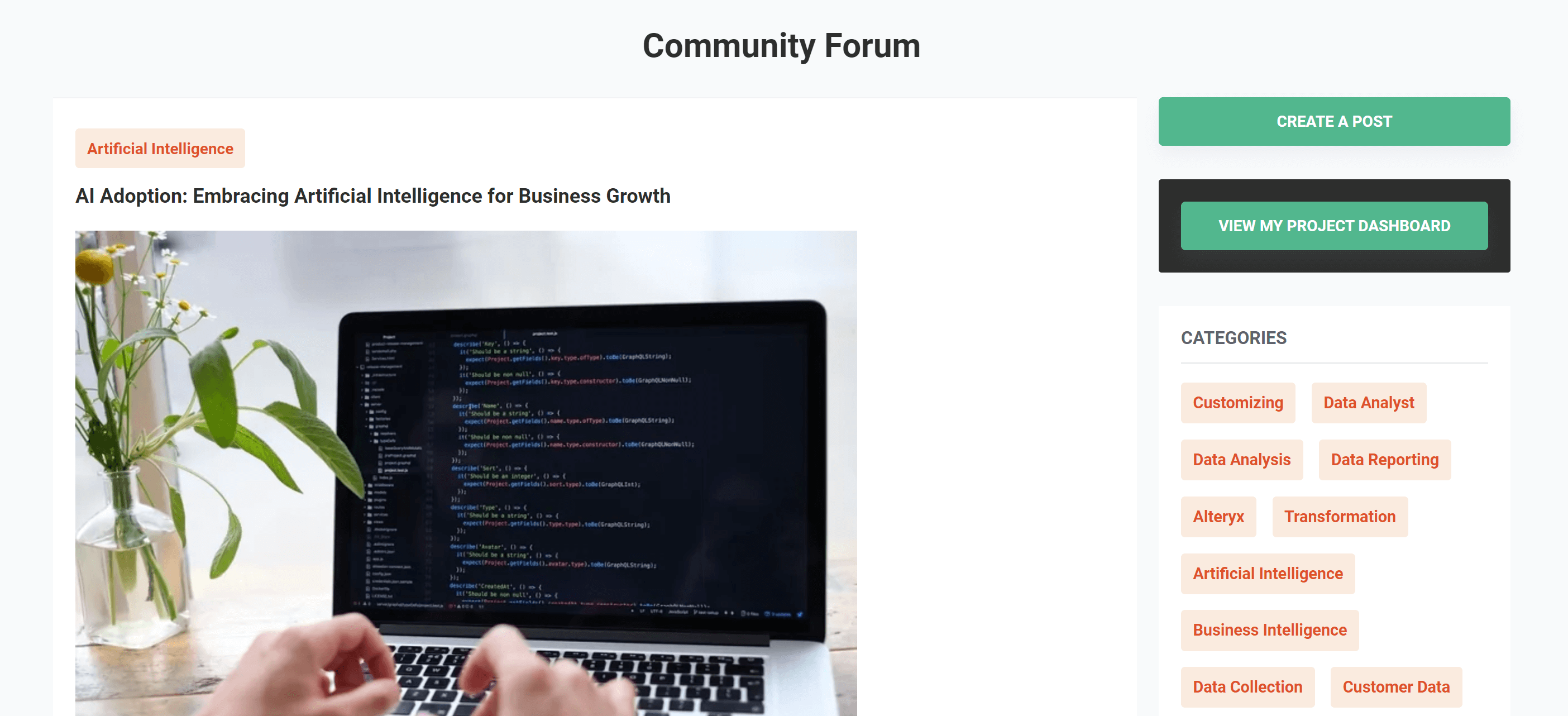What Is Financial Analytics? Types, Tools & Business Applications in 2025

In an era where business decisions are driven by data, financial analytics stands out as a cornerstone of intelligent strategy. From startups to multinational corporations, organizations today rely on financial analytics to go beyond spreadsheets and tap into deep, actionable insights. But what exactly is financial analytics? How is it categorized? And why should businesses care in 2025?
This guide breaks down the different types of financial analytics, the tools that make it smarter, and how it helps businesses improve performance, manage risks, and stay competitive.
What Is Financial Analytics?
Financial analytics is the systematic evaluation of a company’s financial data to assess performance, predict future outcomes, and guide decision-making. It involves analyzing historical data, identifying trends, and building models to improve strategic and operational outcomes.
Unlike traditional accounting, financial analytics isn’t just about reporting—it’s about interpreting numbers in context. Whether it’s measuring profitability, forecasting revenue, or managing investment risks, financial analytics empowers leaders with a deeper, data-backed understanding.
Why Financial Analytics Matters in 2025
The financial landscape is evolving rapidly due to inflationary pressures, geopolitical instability, tighter regulations, and digital disruption. In this complex environment, businesses can no longer rely on instinct or outdated metrics.
Here’s why financial analytics is crucial today:
- Predictive Power: It helps anticipate revenue trends, market shifts, and cost overruns before they occur.
- Efficiency Optimization: Analytics highlights wasteful spending and improves cash flow management.
- Investor Confidence: Data-backed forecasts build transparency and trust with stakeholders.
- Agile Decision-Making: Leaders can simulate scenarios and adjust strategies quickly.
In short, financial analytics is no longer optional it’s essential for survival and growth in today’s competitive market.
The 4 Main Types of Financial Analytics
1. Descriptive Financial Analytics
Core Question: What happened?
Descriptive analytics forms the foundation of financial analysis. It involves aggregating and organizing historical financial data to provide a clear snapshot of what has occurred over a specific time frame.
Common Techniques:
- Income statement and balance sheet reviews
- Cash flow summaries
- KPI dashboards (EBITDA, gross margin, ROE)
- Historical trend analysis (month-on-month, year-over-year)
Data Sources:
- General ledger
- ERP reports
- Financial statements
Business Use Cases:
- Internal monthly/quarterly reporting
- Board presentations
- Variance tracking (e.g., budget vs. actual)
Real-Life Example:
A retail company analyzes last year’s sales by region and product category to determine which locations and SKUs performed best during Q4.
2. Diagnostic Financial Analytics
Core Question: Why did it happen?
This type of analysis uncovers the root causes of financial performance. It looks beyond summary data to understand anomalies, deviations, and breakdowns.
Common Techniques:
- Variance analysis (actual vs. forecast)
- Ratio analysis (e.g., inventory turnover, debt-equity)
- Correlation and regression analysis
- Root cause analysis using drill-down tools
Data Sources:
- Revenue and expense breakdowns
- Customer churn data
- Department-level reports
Business Use Cases:
- Identifying underperforming units
- Analyzing profitability drops
- Understanding overspending causes
Real-Life Example:
A SaaS company sees a 15% drop in MRR. Diagnostic analytics reveals that most of the churn came from customers on annual plans who didn’t renew due to lack of product support.
3. Predictive Financial Analytics
Core Question: What is likely to happen next?
Predictive analytics leverages statistical models, AI, and machine learning to forecast financial performance and future risks.
Common Techniques:
- Time-series forecasting
- Regression models
- Machine learning algorithms
- Scenario modeling & simulations
Data Sources:
- Historical financial data
- Macroeconomic indicators
- Customer behavior patterns
- Market trends
Business Use Cases:
- Revenue forecasting
- Risk assessment (e.g., credit defaults)
- Market expansion planning
- Stock/inventory forecasting
Real-Life Example:
A fintech company uses five years of customer repayment history to build a credit risk model that predicts the likelihood of new borrowers defaulting within the next 12 months.
4. Prescriptive Financial Analytics
Core Question: What should we do next?
Prescriptive analytics takes insights from predictive models and recommends specific actions to improve financial outcomes. It’s where analytics becomes a decision-support tool.
Common Techniques:
- Optimization models
- What-if analysis
- Decision trees
- AI-driven simulation tools
Data Sources:
- Forecasting models
- Real-time operational data
- Market pricing data
- Cost structures
Business Use Cases:
- Budget reallocation
- Capital investment planning
- Dynamic pricing strategies
- Expense optimization
Real-Life Example:
An e-commerce CFO uses prescriptive analytics to simulate multiple promotional strategies for the festive season and chooses the one that maximizes profit without hurting margins.
Top Tools for Financial Analytics in 2025
Financial analytics is powered by advanced software tools. Here are some leading platforms businesses use in 2025:
- Microsoft Power BI – Dashboards and real-time reporting for financial KPIs.
- Zoho Analytics – Affordable tool for SMEs with built-in finance templates.
- Oracle NetSuite – ERP system with robust financial planning and forecasting modules.
- Alteryx – Combines data wrangling with predictive modeling for finance teams.
- Sage Intacct – Cloud-native platform designed for modern finance teams.
- Tableau – Strong in visualizing complex financial data for executive insights.
These tools integrate with accounting software, CRMs, and business systems to provide a full picture of financial health.
Want a deeper look into the best tools available?
Check out our guide on Financial Analytics Tools for Businesses to compare features, pricing, and ideal use cases.
Financial Analytics vs. Business Analytics in Finance
While the two terms are often used interchangeably, they serve different purposes.
| Feature | Financial Analytics | Business Analytics |
| Focus | Finance-related data (revenue, costs, profits) | Broader business metrics (marketing, HR, sales) |
| Scope | Budgeting, forecasting, and risk analysis | Customer behavior, process efficiency |
| Tools | Power BI, NetSuite, Sage | Google Analytics, Tableau, Salesforce |
A hybrid approach is often used in finance departments financial analytics for core planning and business analytics for wider insights.
Real-World Applications of Financial Analytics
Financial analytics has practical implications across various business functions:
- Forecasting Revenue – Predict sales and revenue based on pipeline, market conditions, and past data.
- Optimizing Budgets – Reallocate funds based on departmental performance and ROI.
- Managing Investment Portfolios – Analyze historical stock data to balance risk and reward.
- Cash Flow Analysis – Ensure liquidity by tracking inflows, outflows, and receivables.
- Credit Risk Assessment – Use predictive models to score borrower risk profiles.
- M&A Valuation – Analyze the financials of target companies to assess deal feasibility.
Why Hire Freelance Financial Analysts
In 2025, many businesses are hiring freelance financial analysts for flexibility, speed, and niche expertise.
Benefits of going freelance:
- Access to specialists in FP&A, forecasting, or valuation
- Cost-effective compared to full-time hires
- Scalable based on project needs
- Faster onboarding and delivery timelines
Explore expert financial freelancers on Pangaea X for on-demand insights that deliver results.
Conclusion
Financial analytics is not just a department, it’s a decision-making engine. In 2025, companies that embed analytics into their financial workflows will be more resilient, efficient, and future-ready.
Whether you’re managing a startup’s runway or steering a global enterprise, understanding the types and tools of financial analytics is your competitive edge.
FAQs
1. What are the 4 types of financial analytics?
Descriptive, Diagnostic, Predictive, and Prescriptive. Each serves a unique role, from analyzing the past to shaping future strategies.
2. How does financial analytics improve business decision-making?
It offers deep insights into financial trends, helps identify risks, forecasts future outcomes, and guides strategic planning.
3. Which tools are most commonly used in 2025 for financial analytics?
Power BI, Zoho Analytics, Oracle NetSuite, Alteryx, and Tableau are among the top platforms due to their versatility and real-time capabilities.
4. Can small businesses benefit from financial analytics?
Absolutely. Even startups can use basic tools like Zoho or Power BI to monitor cash flow, track budgets, and plan for growth.
5. Where can I hire freelance financial analysts?
You can find verified freelance financial experts on platforms like Pangaea X for custom analysis and reporting.
Get your data results fast and accelerate your business performance with the insights you need today.



